1099 employees have become crucial in today's workforce, with a notable shift towards hiring these workers. The 1099 employee meaning highlights an arrangement where businesses engage with individuals as independent contractors rather than traditional employees. This trend affects the tax form processing and how small businesses manage their finances, from income tax to employee benefits.
Aloa, an expert in software outsourcing, equips businesses and startups with the tools to engage effectively with 1099 employees. We facilitate smoother operational processes for your business by leveraging our comprehensive knowledge of managing business aspects and worker classification. Our expertise spans ensuring the proper handling of income tax withholding, social security, and other essential business expenses.
Utilizing our insights and experience, we've crafted this guide that delves into the concepts of 1099 employees. We'll explore the differences between 1099 vs. W-2 employees and the advantages of hiring an independent contractor. After reading, you can make informed decisions regarding types of workers, avoid financial penalties due to employee misclassification, and optimize your business operations for the future.
1099 Employee Meaning: What is it?
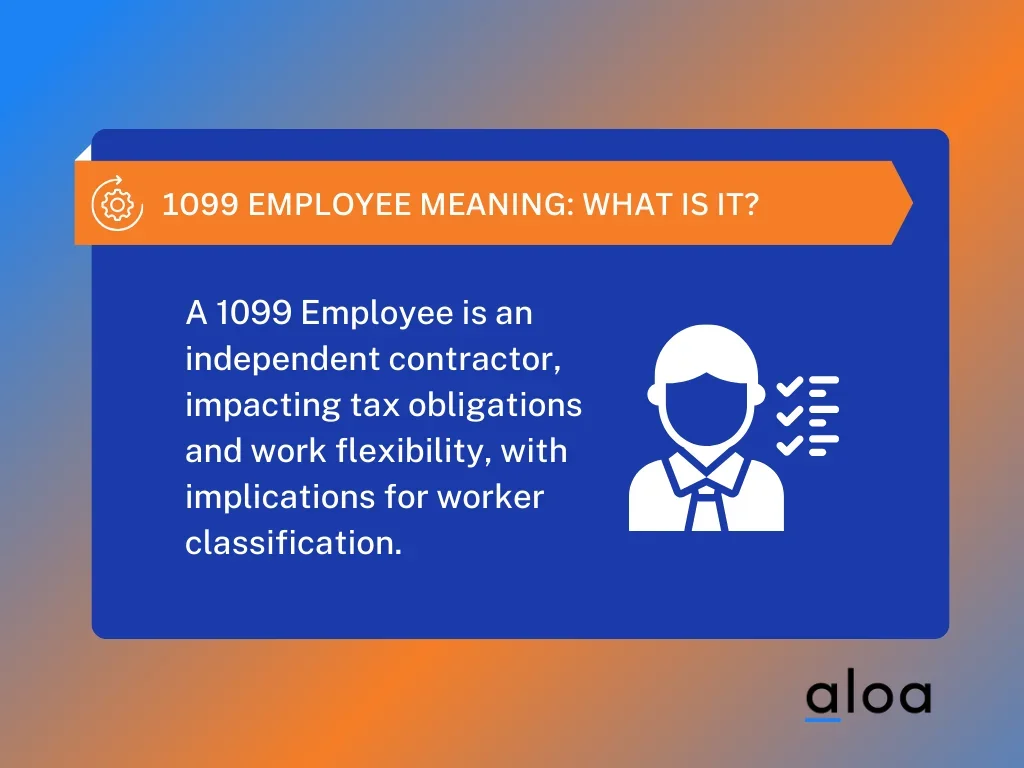
A 1099 employee is an independent contractor who works independently rather than for an employer. This classification impacts tax obligations, work flexibility, and employer responsibilities. Understanding the 1099 employee meaning helps firms navigate tax obligations and classify workers correctly.
Difference Between 1099 vs W-2 Employees
Understanding the 1099 employee helps clarify the distinction between independent contractors and traditional W-2 employees. Employers must grasp these differences to comply with tax laws and manage the workforce effectively.
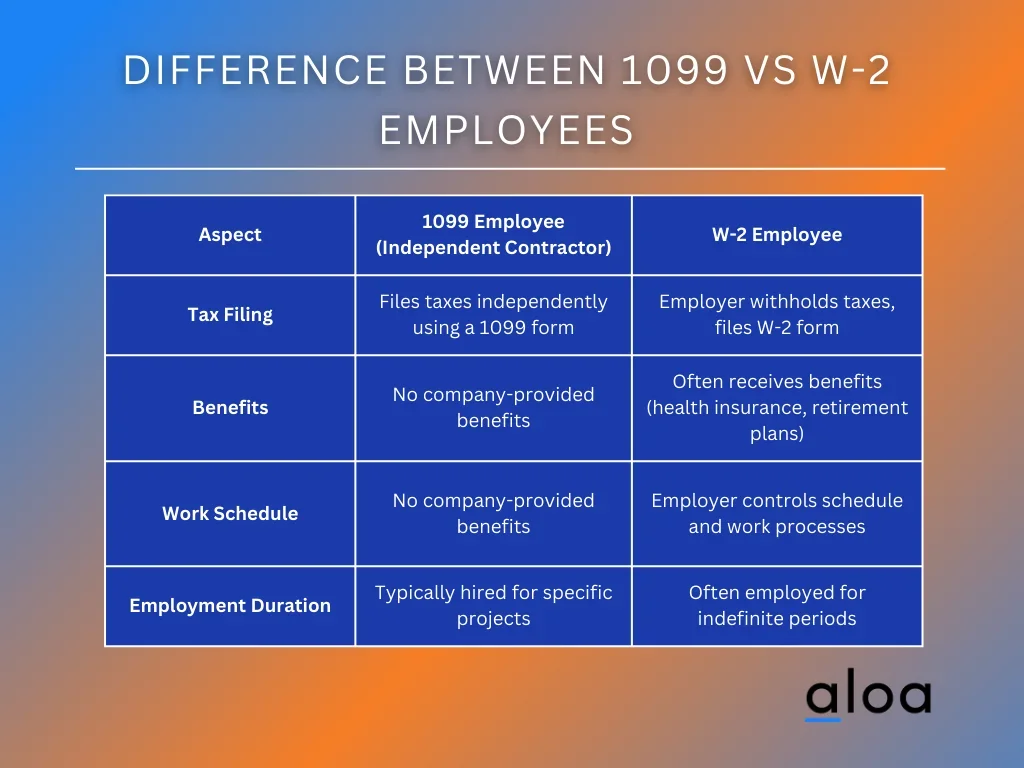
Distinguishing between 1099 and W-2 employees helps businesses navigate tax obligations and understand the flexibility and control independent contractors bring. This clarity ensures compliance with tax laws and informs decisions regarding workforce management.
How To Determine if a Hire Fits the 1099 Employee Category?
Several crucial steps must be undertaken to determine if a hire fits the 1099 employee category. These steps ensure compliance with legal and contractual obligations while clarifying the nature of the working relationship. Here's how to navigate this process effectively:
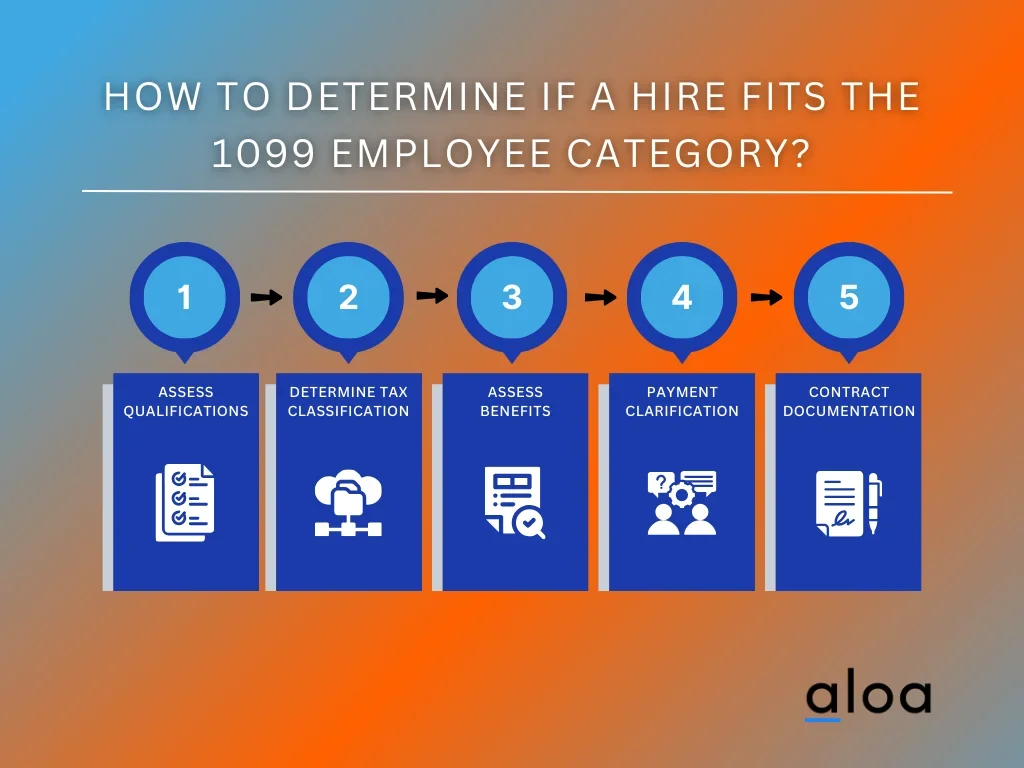
Step 1: Assess Qualifications and Independence
In this step, we evaluate whether the individual qualifies as an independent contractor and possesses the necessary independence from the hiring entity. This assessment is crucial for determining the appropriate classification and ensuring compliance with relevant regulations.
Ask these questions to assess their qualifications and independence:
- Does the individual have control over their work schedule?
- Are they free to choose their methods and tools to complete tasks?
- Do they operate independently without direct supervision from the hiring entity?
- Can they work for multiple clients simultaneously?
- Are they responsible for their expenses, such as equipment and supplies?
- Do they have the ability to hire assistants or subcontractors to complete work?
These questions can effectively determine if a hire fits the 1099 employee category. Assessing qualifications and independence is essential for accurately classifying workers and avoiding misclassification issues. As workplace culture trends evolve, businesses must also evaluate how independent contractors fit into broader initiatives, such as collaboration strategies or employee recognition programs designed for traditional staff.
Step 2: Determine Tax Classification
When determining the tax classification of a hire, it is crucial to ascertain whether they qualify as an employee or an independent contractor. This distinction directly impacts tax reporting and compliance. Here are five key aspects to consider:
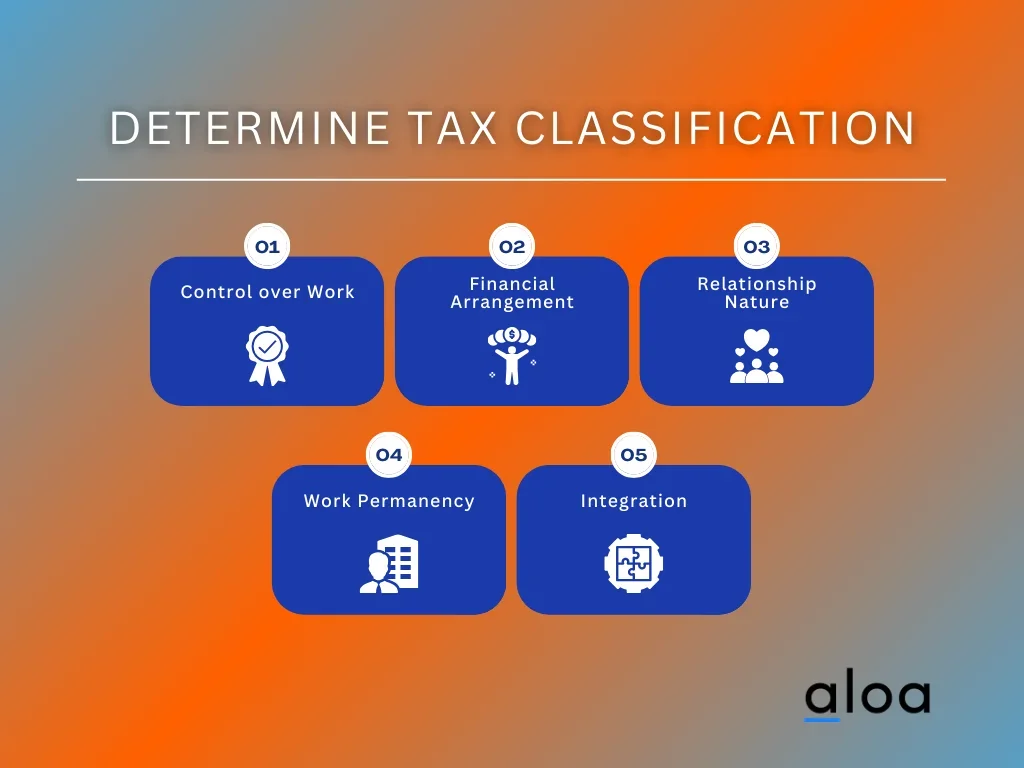
- Control over Work: Evaluate how much control you have over what the worker does and how they perform their tasks. Independent contractors typically enjoy more freedom in how they complete their work.
- Financial Arrangement: Consider the financial and payment arrangements. Independent contractors often have a fixed contract price and are responsible for expenses.
- Relationship Nature: Assess the nature of the relationship. Do you provide benefits like insurance, pension plans, or vacation pay? Such benefits are usually not offered to independent contractors.
- Work Permanency: Reflect on the permanency of the relationship. If the work engagement is expected to last indefinitely rather than for a specific project or period, this might indicate an employment relationship.
- Integration: Think about how integral the work is to your business. Workers whose services are key to the business's core operations are more likely to be classified as employees.
Navigating the IRS guidelines to determine the appropriate tax classification for a new hire can be challenging. Classifying workers as employees or independent contractors ensures compliance with tax laws and avoids costly penalties.
Step 3: Assess Benefits
Assessing benefits is crucial when determining if a hire fits the independent contractor category. This step helps clarify whether the individual is entitled to traditional employee benefits or if they are responsible for managing their benefits as an independent contractor. Here are the factors to consider when assessing the benefits:
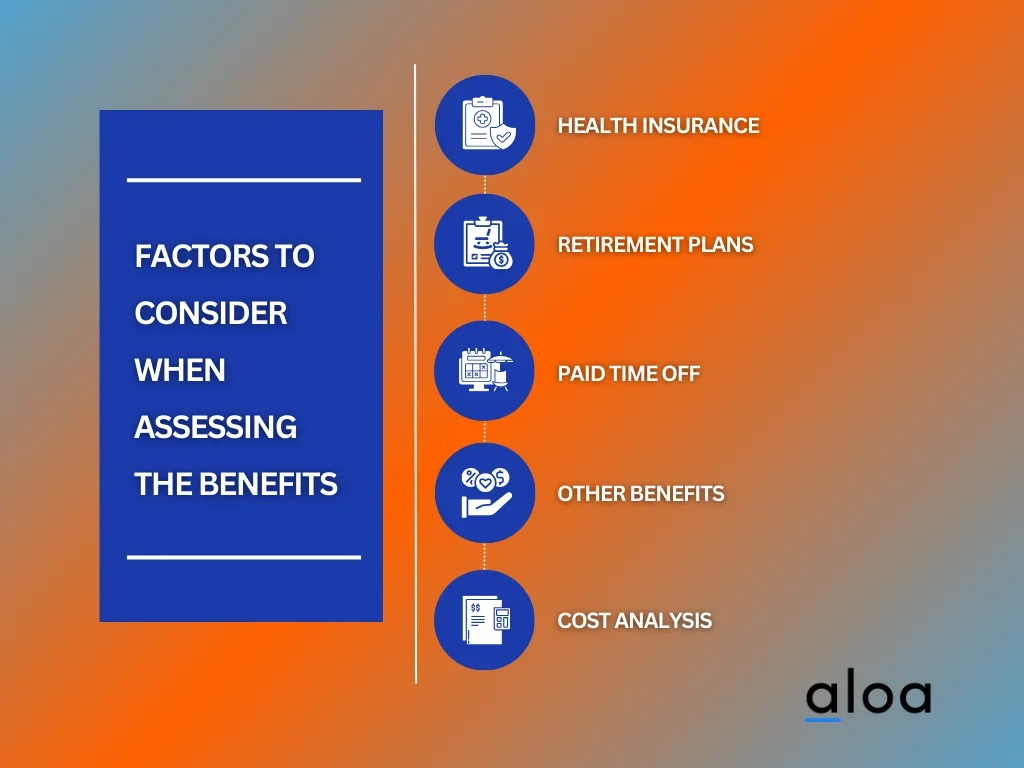
- Health Insurance: Determine if the individual is provided health insurance coverage. If not, ascertain if they are responsible for obtaining their coverage as an independent contractor.
- Retirement Plans: Evaluate if the individual can access retirement plans such as 401(k) or pension schemes through the hiring entity. Alternatively, confirm if they are responsible for managing their retirement savings.
- Paid Time Off: Investigate whether the individual is eligible for paid time off, including vacation days, sick leave, or other forms of paid leave. If not, clarify if they can manage their time off as independent contractors.
- Other Benefits: Consider additional benefits typically offered to employees, such as dental or vision coverage, disability insurance, or employee discounts. Determine if the individual has access to these benefits or if they are excluded as an independent contractor.
- Cost Analysis: Conduct a cost analysis to compare the expenses associated with providing benefits to an employee versus hiring an independent contractor without benefits.
Assessing benefits is a vital step in determining the classification of a hire as a 1099 employee. Evaluating health insurance, retirement plans, paid time off, and other benefits, clarity is gained regarding the individual's status and responsibilities within the working relationship.
Step 4: Clarifying Payment Structure and Scope of Work
Consider the rates, invoicing procedures, and terms when setting the payment structure. Determine whether payment will be per project, hourly, or a fixed fee. This clarity ensures alignment between both parties. Considerations include:
- Rates: Establish competitive rates based on industry standards and the complexity of the work.
- Invoicing Procedures: Define the process for submitting invoices, including required details and frequency.
- Payment Terms: Specify payment terms, such as due dates and acceptable forms of payment.
- Per-Project Basis: Assess if the project-based payment aligns with the scope and duration of the work.
- Fixed Fee Arrangement: Evaluate the feasibility and fairness of a fixed fee for the entire project.
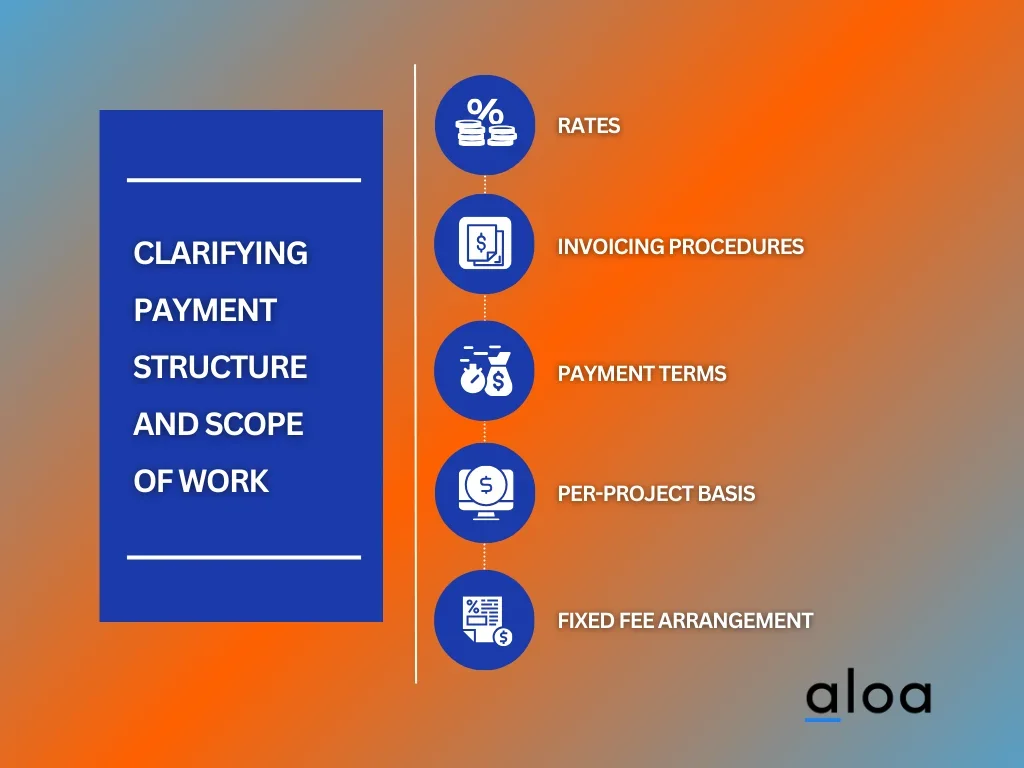
Clear payment structures and defined scopes of work contribute to determining whether a hire fits the category, ensuring both parties understand their roles and responsibilities.
Step 5: Documenting Contractual Arrangements
More importantly, execute a written agreement draft outlining the terms and conditions of the working relationship. This contract should cover various aspects, such as defining the individual's status as an independent contractor, specifying their work scope, detailing the agreed-upon payment terms, and outlining any confidentiality agreements.
Ensuring the contract is clear, detailed, and legally sound is crucial to protect both parties. Potential misunderstandings or disputes can be minimized, and expectations can be effectively managed throughout the working relationship by clearly documenting these arrangements. This step helps establish a solid foundation for the partnership between the hiring entity and the contractor, fostering trust and clarity in their interactions.
Advantages of Hiring a 1099 Employee
Hiring an independent contractor offers unique benefits that can significantly impact any business owner's operational flexibility and financial efficiency. This approach to staffing brings flexibility and efficiency, particularly when managing employment taxes and operational costs. Here are five key benefits to expect:

Reduced Employment Taxes and Benefits Costs
When business owners choose to work with 1099 employees, they sidestep the need to pay unemployment taxes, health insurance, or contributions to pension plans. Unlike traditional employees, 1099 contractors handle their taxes, including payroll and income taxes. This distinction significantly lowers the financial burden on the employer, focusing resources on core business needs.
Greater Degree of Control Over Costs
Employers gain a significant degree of control over costs with 1099 employees. Since these workers are paid only for their work, businesses can avoid the financial implications of minimum wage, overtime pay, sick leave, and vacation days. This model allows for a more dynamic allocation of funds, directly correlating expenses with income-generating activities.
Simplified Administrative Processes
The simplified administrative process is a hallmark of engaging 1099 employees. Managing tax obligations, including the end-of-the-year documentation, falls on the independent contractor. For the business owner, this means fewer worries about direct deposit setups, managing payroll taxes, handling vacation pay, and streamlining operations significantly.
Flexibility and Access to Specialized Skills
Another standout advantage of hiring a 1099 employee is the flexibility and access to a broad spectrum of specialized skills. Managed service providers often facilitate connections to these employees with diverse expertise, allowing businesses to swiftly adapt to project needs without the long-term commitment of hiring full-time staff. This flexibility extends to scaling workforce size according to project demands, a boon in the fast-paced business environment.
Strategic Financial Planning
Working with 1099 employees facilitates strategic financial planning. Businesses can forecast and budget more accurately, knowing that the costs associated with these workers are variable and directly tied to projects. This arrangement fosters a type of relationship where the written contract defines the entire relationship, ensuring clear expectations about the worker’s status, office space, tools, hours, and rates. Overall, it helps to make it easier for both parties to focus on achieving mutual goals.
FAQs About Hiring a 1099 Employee
Hiring a 1099 employee, often called an independent contractor, presents a unique set of considerations. These individuals run their businesses, offering services to various clients. Here, we address common questions regarding this practice, shedding light on payment methods, the different types of 1099 employees, and essential considerations for employers.
1. How to Pay 1099 Employees?
Paying 1099 employees or independent contractors requires attention to detail and adherence to specific guidelines. This process is markedly different from compensating your traditional workforce. Paying independent contractors necessitates a clear understanding of the contract, agreed-upon rates, and schedules. The process is streamlined yet demands precision to ensure compliance and satisfaction.
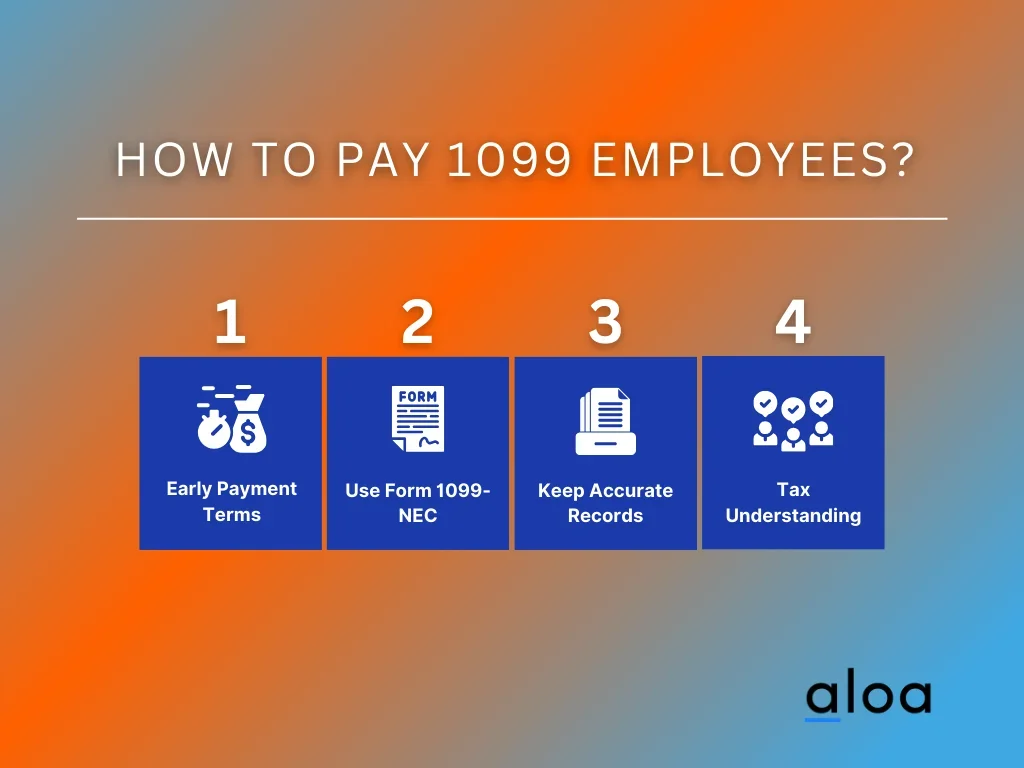
Here is the process of paying 1099 employees:
- Agree on Payment Terms Early: Establish clear payment terms before starting work. This includes payment schedules, amounts, and methods.
- Use Form 1099-NEC: For tax purposes, use Form 1099-NEC to report payments made to independent contractors in the United States. This form is crucial at the end of the tax year.
- Keep Accurate Records: Document all payments made to independent contractors throughout the year. This practice aids in accurate tax filing and resolves any disputes.
- Understand Tax Responsibilities: Know that independent contractors handle their taxes. Employers do not withhold taxes for these workers, making it a contractor’s responsibility.
Implementing a structured approach to paying independent contractors simplifies the process for employers. It ensures compliance with tax laws and fosters a transparent relationship with hired professionals.
2. Are There Different Types of 1099 Employees?
1099 employees broadly categorize independent contractors. The gig economy has introduced a diverse range of contract employment opportunities. Recognizing the different types of 1099 employees helps employers tailor contracts and payments accordingly.
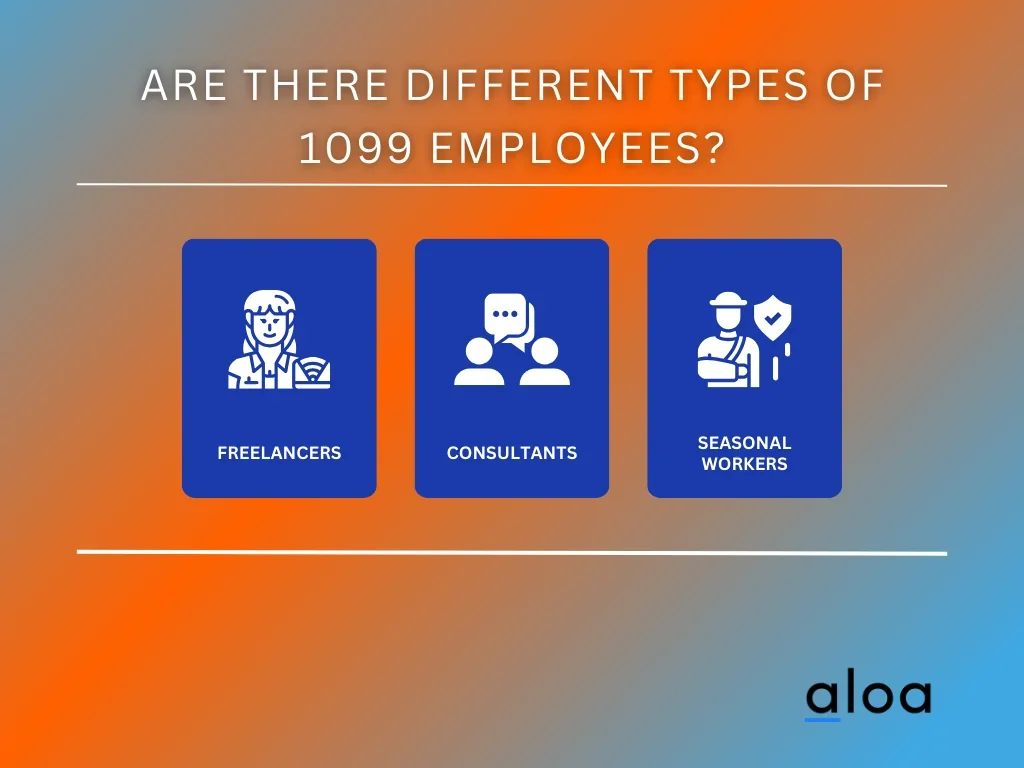
Here are the different types of 1099 employees:
- Freelancers: Individuals who offer their services on a project basis. They set their rates and hours, embodying the essence of running their business.
- Consultants: Experts in a specific field who provide advisory services. Like freelancers, they enjoy a high level of control over their work but often engage with clients on a longer-term basis.
- Seasonal Workers: Those hired for specific seasons or periods, not under traditional employment terms, fall into this category. They work independently, often with their tools.
Based on that insight, understanding the various types of 1099 employees allows employers to make informed decisions. It ensures the right fit for the task, benefiting both parties involved.
3. What are the Considerations for Employers When Hiring 1099 Employees?
Hiring independent contractors comes with a unique set of considerations. These ensure compliance and mutual satisfaction in the working relationship. Determining worker status and an employer's level of control are critical factors. Employers must navigate these carefully to maintain the distinction from traditional employment.
Here are the things to consider when hiring 1099 employees:
- Determine Worker Status Correctly: Use IRS guidelines to ensure the correct classification of workers. This affects tax responsibilities and the provision of benefits like unemployment insurance.
- Understand the Level of Control: Independent contractors operate their own businesses and decide their hours and methods. Employers should respect this autonomy to avoid misclassification.
- Consider Contract Terms: Defined contracts help set expectations. This includes scope of work, deadlines, and payment terms, ensuring a smooth working relationship.
- Assess Insurance Needs: While independent contractors manage their insurance, employers should verify coverage to mitigate risks.
Overall, employers must weigh these considerations carefully. This ensures compliance with laws and fosters a productive, mutually beneficial relationship with 1099 employees.
Key Takeaway
Understanding the 1099 employee meaning holds crucial significance for employers and employees navigating the landscape of modern work arrangements. Distinguishing independent contractors from traditional employees ensures compliance with legal standards and optimizes financial and operational strategies. An outsourcing consultant often highlights the flexibility and cost efficiency that hiring 1099 employees can bring to businesses, offering a competitive edge in today's dynamic market.
It is important to correctly classify employees, with the implications of 1099 employment extending deep into a company's financial and operational strategies. As a managed service provider, Aloa offers companies a pathway to understand and implement best practices in hiring 1099 employees. We further simplify this process, connecting businesses with the right talent while ensuring compliance with regulatory standards.
To stay ahead in the evolving business landscape, understanding the concept of 1099 employee meaning is essential. Sign up for our email list, where you'll find more insightful content on navigating the complexities of hiring independent contractors. Let Aloa guide you through the intricacies of 1099 employment, ensuring your business operations are efficient and compliant.

